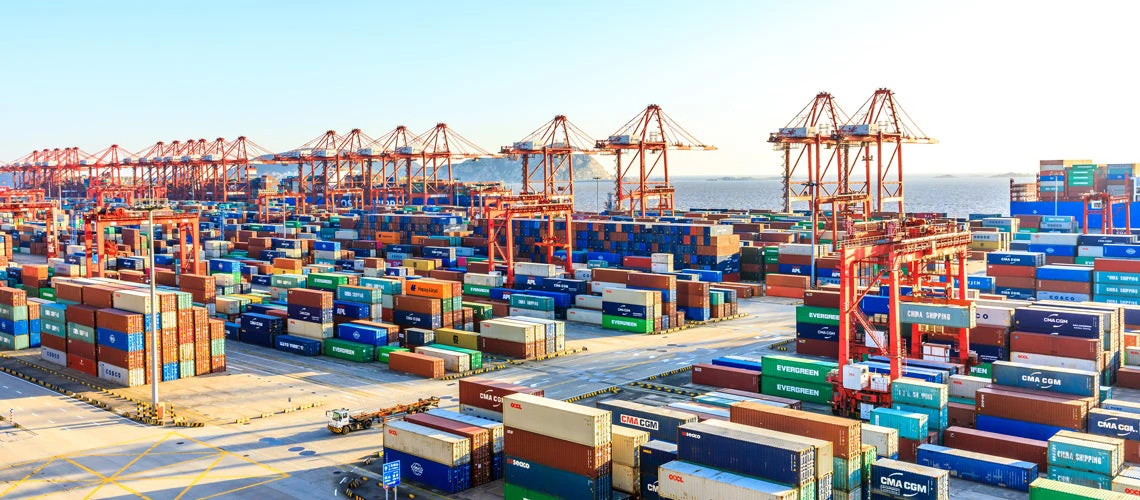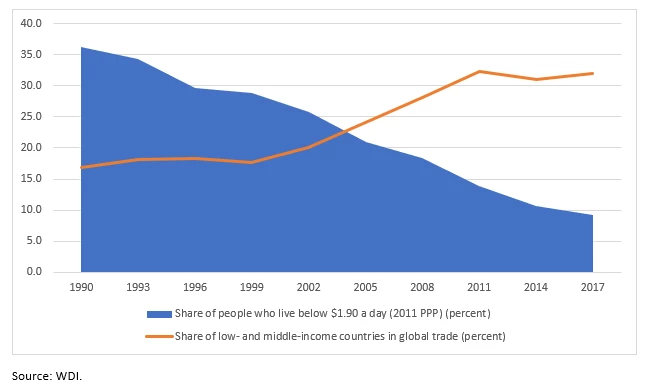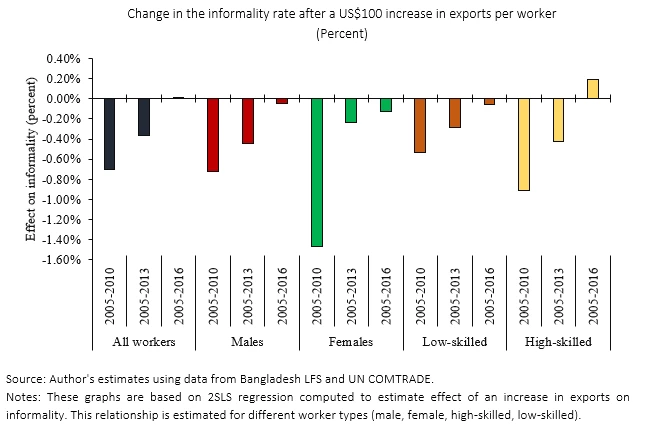 Photo credit: Shutterstock
Photo credit: Shutterstock
Protectionism is on the rise in many parts of the world, and the COVID-19 pandemic is only partly to blame. This is hardly a new phenomenon. When I was Indonesia’s trade minister a decade ago, trade liberalization certainly did not have broad popular support.
Although lowering or eliminating tariffs usually benefits many producers and consumers, it might endanger the livelihoods of some. Understandably, they loudly opposed such measures. A fuller understanding of the uneven distributional effects of trade – put simply, who gains and who loses, where, and why – is critical to design better supporting policies and to provide governments with the right narrative to allay such concerns.
"Nowadays, advocates of protectionism increasingly base their arguments on trade’s adverse distributional consequences. But governments must remember that the potential benefits of trade are far greater, provided they can put in place policies that deliver them more equitably."
Aggregate economic data leave no doubt that the rapid increase in global trade over the past 30 years has been a powerful engine of growth and prosperity, dramatically reducing poverty in developing countries. From 1990 to 2017, these countries increased their share in global exports from 16% to 30%, helping to cut the proportion of the world’s population living in extreme poverty from 36% to 9%.

But people do not live their lives in the aggregate, and even the most stalwart defenders of trade have come to recognize that the benefits of its expansion in recent decades have not been distributed equally. Although it delivered important overall gains, it also triggered differentiated effects across industries, jobs, and regions. These turned out to be deeper, more concentrated, and longer-lasting than was previously understood.
Policymakers therefore now need to examine more carefully how trade affects people as both consumers and workers – particularly in the context of local labor markets and policy environments , and with a view to the type and duration of any trade shock. A recent World Bank study provides some insights into this issue by examining the distributional impact of trade on wages, employment, and income in a broad range of developing countries: Bangladesh, Brazil, Mexico, South Africa, and Sri Lanka.
For example, the study found that average annual wages increased between 2005 and 2016 in Bangladeshi districts exposed to trade. No surprises there. But a little deeper digging reveals a more nuanced picture in which not everyone benefited equally. Average wage increases were substantially higher for men than for women, and five times greater for high-skilled workers than low-skilled ones.
Interestingly, trade helped women more than men in terms of providing opportunities to move into the formal economy. A $100 increase in exports per worker between 2005 and 2010 led to a 1.5% decrease in the share of unregulated employment for women, compared to a 0.7% decline for men.

These findings for Bangladesh can inform better policies related to labor mobility, equal pay, and programs to upgrade skills – all of which can help to mitigate the uneven effects of trade. Moreover, the study shows that new data and analytical techniques allow us to anticipate the potential local effects of trade measures before they are implemented, and to identify effective accompanying policies to spread the gains from trade more widely.
Consider Sri Lanka. According to the study, lowering the country’s trade barriers would boost its GDP growth and reduce poverty. But trade liberalization would increase wage inequality, with gains likely to be concentrated in urban areas. This underscores the need for complementary policies – such as reducing mobility costs for rural workers and improving the business environment – to ensure a more inclusive outcome.
"Trade can spur growth, job creation, and poverty reduction, and is thus necessary to sustain the post-pandemic recovery."
In general, there are three types of complementary policies that could help to spread the benefits of trade more evenly. First, governments should aim to overhaul discriminatory labor laws, provide a level playing field, and strengthen markets to enable productive parts of the economy to grow. A second priority is to reduce trade costs to improve domestic firms’ export competitiveness. Third, policymakers should speed up labor-market adjustments to enable workers to move to more productive activities.
As a government minister in Indonesia, I regularly reminded my colleagues that my portfolio comprised not only trade but also development. Trade can spur growth, job creation, and poverty reduction, and is thus necessary to sustain the post-pandemic recovery. With the right set of supporting policies to ensure that the gains are widely shared, trade can play a crucial role in building a prosperous economy.
Nowadays, advocates of protectionism increasingly base their arguments on trade’s adverse distributional consequences. But governments must remember that the potential benefits of trade are far greater, provided they can put in place policies that deliver them more equitably.


Join the Conversation